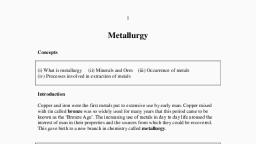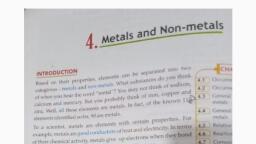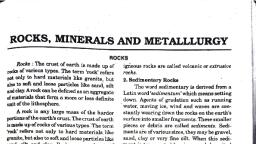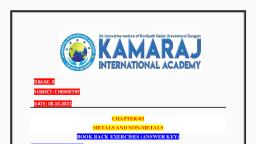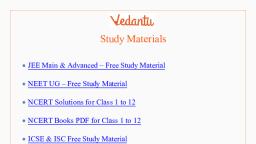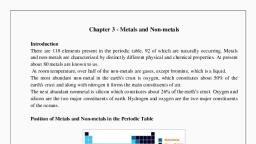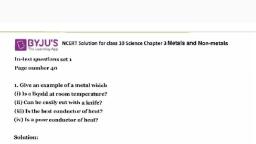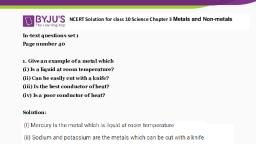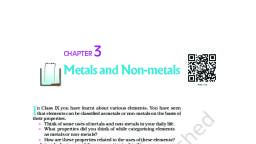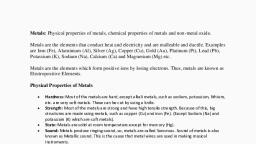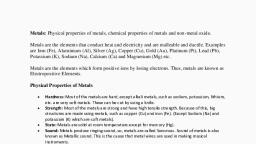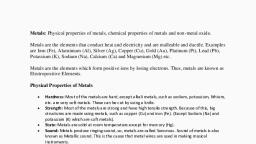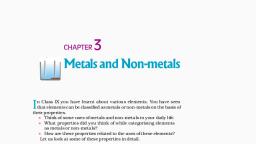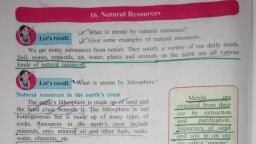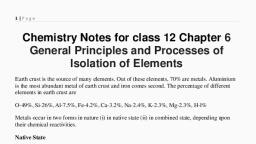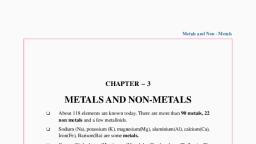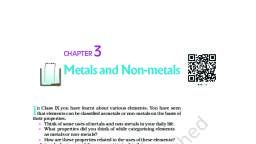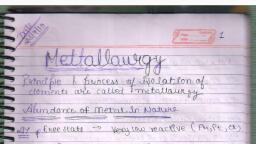Page 1 :
Principles of Metallurgy
Page 2 :
In class 8 you have studied about certain properties of metals like, malleability, ductility, sonority etc. Metals play an important role in our daily life., We use various metals for various purposes like gold and silver as jewellery, copper, iron, aluminium for making conducting wires and utensils etc., We use many house hold articles made up of metals and their alloys., Do metals exist in nature in the same form as that we use in our daily life?, Do you know how these metals are obtained?, “Metallurgy is the process of extraction of metals from their ores”., Human history in terms of materials had the Bronze Age and Iron Age pertaining to the metals they started to use the bronze (an alloy of copper and tin) and iron. Now we have more than 75% metals among the elements available. , Occurrence of the metals in nature , The earth’s crust is the major source of metals. Sea water also contains some soluble salts such as sodium chloride and magnesium chloride etc.
Page 3 :
Some metals like gold (Au), silver (Ag) and copper (Cu) are available in nature in free state (native) as they are least reactive., Other metals mostly are found in nature in the combined form due to their more reactivity. The elements or compounds of the metals which occur in nature in the earth crust are called minerals., At some places, minerals contain a very high percentage of a particular metal and the metal can be profitably extracted from it. The minerals from which the metals are extracted without economical loss are called ores., Aluminium is the most common metal in the Earth’s crust, occurring in most of minerals. However, it isn’t economically feasible to extract it from most of these minerals., Instead, the usual ore from which it is profitable to extract it is bauxite – which contains from 50 – 70 % of aluminium oxide .
Page 5 :
You will notice that the ores of many metals are oxides and sulphides. This is why oxygen - sulphur (16th group) group is called chalcogen family (chalco = ore; genus = produce), The metals like K, Na, Ca, Mg and Al are so reactive that they are never found in nature in free state., The metals like Zn, Fe, Pb etc., are moderately reactive. They are found in the earth crust mainly as oxides, sulphides and carbonates., Metals like Au, Ag are least reactive and they are found even in free state in nature., Based on reactivity we can arrange metal in descending order of their reactivity as shown below





















